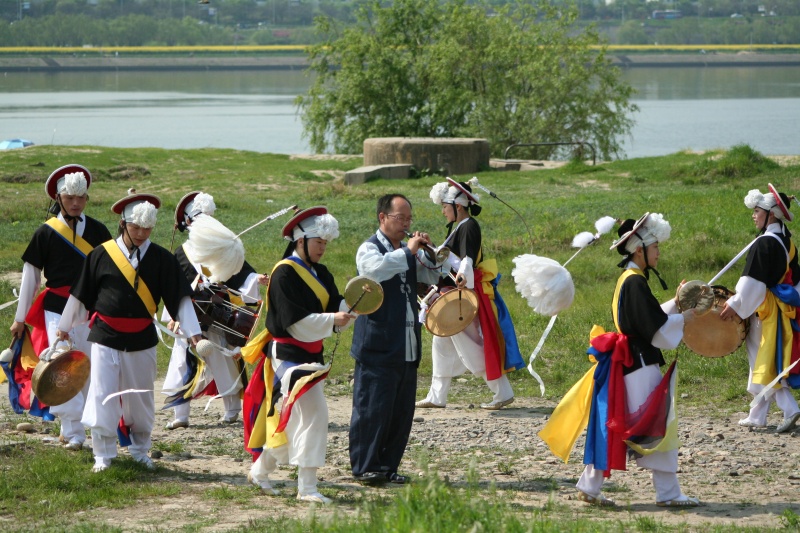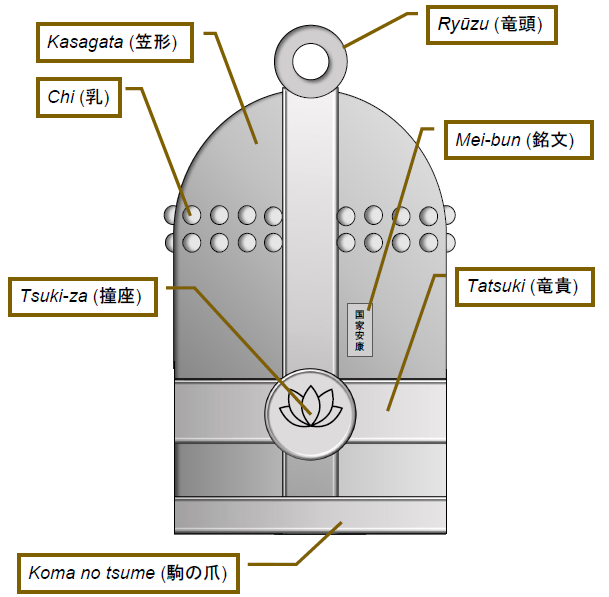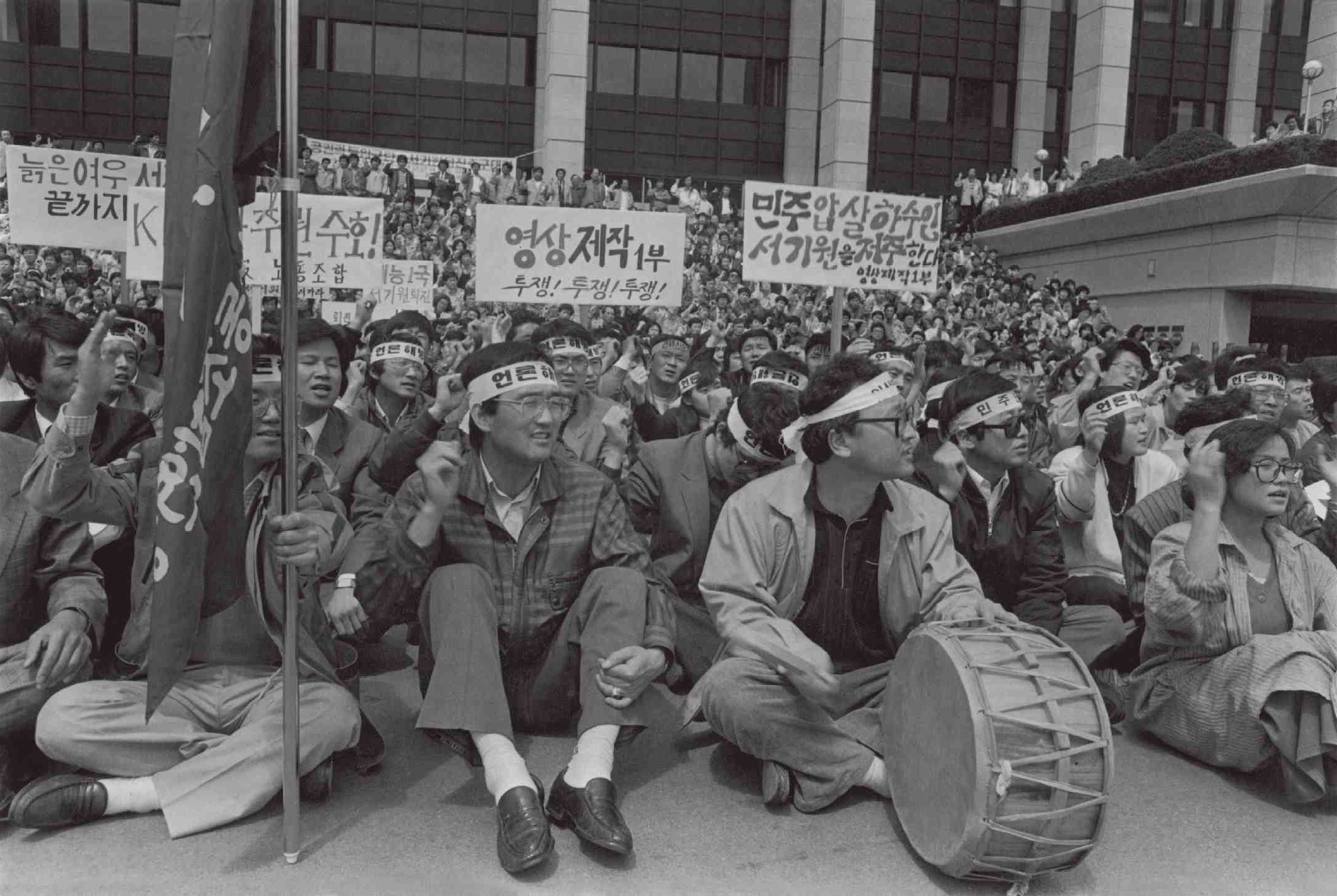|
Samul Nori
() is a genre of Korean percussion music. It is a modern adaptation of traditional Korean musics, namely the ritual farming music '' nongak'' and Korean shamanic music ''muak'', for the indoor stage. As per its name, ''samul nori'' is performed with four traditional Korean musical instruments: a small gong ''kkwaenggwari'', the larger gong '' jing'', an hourglass-shaped drum ''janggu''; and a barrel drum called '' buk''. With dozens of professional and amateur groups, ''samul nori'' has been called "Korea’s most successful traditional music". History The term ''samul'' originally comes from Korean Buddhism, where it referred to four instruments considered essential for ritual use in temples: the wooden fish (), the temple bell (), the dharma drum (), and the bronze gong (). The term ''nori'' means "to play" in Korean. ''Samul nori'' is a modern adaptation of the traditional ritual music of Korean farmers, called '' nongak'' or ''pungmul nori'', for the stage. Traditio ... [...More Info...] [...Related Items...] OR: [Wikipedia] [Google] [Baidu] |
Pungmul
''Pungmul'' (; ) is a Traditional music of Korea#Folk music, Korean folk music tradition that includes drumming, dance, dancing, and singing. Most performances are outside, with dozens of players all in constant motion. ''Pungmul'' is rooted in the ''dure'' (collective labor) farming culture. It was originally played as part of farm work, on Culture of Korea#Festivals of the lunar calendar, rural holidays, at other village community-building events, and to accompany Korean shamanism, shamanistic rituals, mask dance dramas, and other types of performance. During the late 1960s and 1970s it expanded in meaning and was actively Pungmul as Protest, used in political protest during the pro-democracy movement, although today it is most often seen as a Performing arts, performing art. Based on 1980s research, this kind of music was extensively studied in Chindo Island. Older scholars often describe this tradition as ''nongak'' (), a term meaning "farmers' music" whose usage arose during t ... [...More Info...] [...Related Items...] OR: [Wikipedia] [Google] [Baidu] |
Bonshō
, also known as or are large bell (instrument), bells found in Buddhist temples in Japan, Buddhist temples throughout Japan, used to summon the monks to prayer and to demarcate periods of time. Rather than containing a clapper, are struck from the outside, using either a handheld mallet or a beam suspended on ropes. The bells are usually made from bronze, using a form of Casting (metalworking)#Expendable mold casting, expendable mould casting. They are typically augmented and ornamented with a variety of Boss (architecture), bosses, raised bands and inscriptions. The earliest of these bells in Japan date to around 600 Common Era, CE, although the general design is of much earlier Chinese origin and shares some of the features seen in ancient Chinese bells. The bells' penetrating and pervasive tone carries over considerable distances, which led to their use as signals, timekeepers and alarms. In addition, the sound of the bell is thought to have supernatural properties; it is ... [...More Info...] [...Related Items...] OR: [Wikipedia] [Google] [Baidu] |
University Of Chicago Press
The University of Chicago Press is the university press of the University of Chicago, a Private university, private research university in Chicago, Illinois. It is the largest and one of the oldest university presses in the United States. It publishes a wide range of academic titles, including ''The Chicago Manual of Style'', numerous academic journals, and advanced monographs in the academic fields. The press is located just south of the Midway Plaisance on the University of Chicago campus. One of its quasi-independent projects is the BiblioVault, a digital repository for scholarly books. History The University of Chicago Press was founded in 1890, making it one of the oldest continuously operating university presses in the United States. Its first published book was Robert F. Harper's ''Assyrian and Babylonian Letters Belonging to the Kouyunjik Collections of the British Museum''. The book sold five copies during its first two years, but by 1900, the University of Chicago Pr ... [...More Info...] [...Related Items...] OR: [Wikipedia] [Google] [Baidu] |
Ethnomusicology
Ethnomusicology is the multidisciplinary study of music in its cultural context. The discipline investigates social, cognitive, biological, comparative, and other dimensions. Ethnomusicologists study music as a reflection of culture and investigate the act of music-making through various immersive, observational, and analytical approaches. This discipline emerged from comparative musicology, initially focusing on non-Western music, but later expanded to embrace the study of all different music. The practice of ethnomusicology relies on direct engagement and performance, as well as academic work. Fieldwork takes place among those who make the music, engaging local languages and culture as well as music. Ethnomusicologists can become participant observers, learning to perform the music they are studying. Fieldworkers also collect recordings and contextual data. Definition Ethnomusicology combines perspectives from folklore, psychology, cultural anthropology, linguistics, compara ... [...More Info...] [...Related Items...] OR: [Wikipedia] [Google] [Baidu] |
Alan Heyman
Alan Charles Heyman (16 March 1931 – 1 March 2014), Korean name Hae Eui-man (), was a South Korean musicologist and composer. Born in the United States, he first came to South Korea in 1953 with the United States Army during the Korean War, and after completing a graduate degree in music education at Columbia University, moved to South Korea permanently in 1960 to devote himself to research and composition. He led traditional Korean music troupes on tours of North America and Europe, and made significant contributions to the preservation of Korean traditional music, for which he was recognised with awards from national and international organisations. He gave up his U.S. citizenship to become a South Korean citizen in 1995, and remained in the country until his death in 2014. In the Korean War Heyman was born in New York City on 16 March 1931 to Charles and Lillian Heyman. He went on to attend the University of Colorado, where he majored in music while also studying a pre-medic ... [...More Info...] [...Related Items...] OR: [Wikipedia] [Google] [Baidu] |
Korean Broadcasting System
The Korean Broadcasting System (KBS; ) is the public broadcasting, national broadcaster of South Korea. Founded in 1927, it is one of the leading South Korean television and radio broadcasters under the government of South Korea. The KBS operates seven radio networks, ten television channels and multiple Internet-exclusive services. Its flagship terrestrial television television station, station, KBS1, broadcasts on Television channel, channel 9 while KBS2, an entertainment-oriented network, broadcasts on channel 7. KBS also operates the international service KBS World, which provides television, radio and online services in 12 languages. History Early radio broadcasts The KBS began as Gyeongseong Broadcasting Station () with call sign JODK, established by the Governor-General of Korea on 16 February 1927. It became the in 1932. After Korea was liberated from Japanese rule at the end of World War II, this station started using the call sign HLKA in 1947 after the United St ... [...More Info...] [...Related Items...] OR: [Wikipedia] [Google] [Baidu] |
Park Chung Hee
Park Chung Hee (; ; November14, 1917October26, 1979) was a South Korean politician and army officer who served as the third president of South Korea from 1962 after he seized power in the May 16 coup of 1961 until Assassination of Park Chung Hee, his assassination in 1979. His regime oversaw a period of intense economic growth and transformation, making him one of the most consequential leaders in Korean history, although his legacy as a military dictator continues to cause controversy. Before his presidency, Park was the second-highest-ranking officer in the South Korean army. His coup brought an end to the interim Second Republic of Korea. After serving for two years as chairman of the Supreme Council for National Reconstruction, military junta, he was 1963 South Korean presidential election, elected president in 1963, ushering in the Third Republic of Korea, Third Republic. A firm Anti-communism, anti-communist, he continued to maintain close ties with the United States, wh ... [...More Info...] [...Related Items...] OR: [Wikipedia] [Google] [Baidu] |
Kim Duk-soo
Kim Duk-soo (; born September 23, 1952) is a South Korean traditional musician and the founding professor of the School of Korean Traditional Arts at the Korea National University of Arts. He is best known for creating the ''samul nori'' genre of Korean music. Biography Kim was born in Daejeon, South Korea on September 23, 1952. He began his music career at the age of five when joined the Namsadang group, a wandering artists troupe, first as a child acrobat, then a drummer. At age seven, Kim became the youngest person to win the President's Award in the 1959 National Folk Music Contest. A few years later, Kim began touring internationally with group such as the Little Angels Children's Folk Ballet of Korea, performing at the Mexico and Montreal Olympics, as well as the Osaka EXPO. In 1978, Kim, alongside his colleagues Kim Yong-bae, Lee Kwang-soo, and Choi Jong-sil, formed the SamulNori group. The group used four main instruments: kkwaenggwari, jing, buk, and janggu, the lat ... [...More Info...] [...Related Items...] OR: [Wikipedia] [Google] [Baidu] |
Seoul Metropolitan Government
The Seoul Metropolitan Government () is a local government of Seoul, South Korea. The mayor is elected to a four-year term by the citizens of Seoul and is responsible for the administration of the city government. The Seoul Metropolitan Government deals with administrative affairs as the capital city of South Korea. Hence, it is more centralized than that of most other cities, with the city government being responsible for correctional institutions, public education, libraries, public safety, recreational facilities, sanitation, water supply, and welfare services. In the city government, there are 5 offices, 32 bureaus, and 107 divisions. The headquarters is located in the Seoul City Hall building which is in Taepyeongno, Jung-gu, Seoul. The Government started on September 28, 1946 as the Seoul City Government which became Seoul Metropolitan Government on August 15, 1949. The Seoul Metropolitan Government has one mayor and three vice mayors, with one in charge of political affa ... [...More Info...] [...Related Items...] OR: [Wikipedia] [Google] [Baidu] |
Pungmul
''Pungmul'' (; ) is a Traditional music of Korea#Folk music, Korean folk music tradition that includes drumming, dance, dancing, and singing. Most performances are outside, with dozens of players all in constant motion. ''Pungmul'' is rooted in the ''dure'' (collective labor) farming culture. It was originally played as part of farm work, on Culture of Korea#Festivals of the lunar calendar, rural holidays, at other village community-building events, and to accompany Korean shamanism, shamanistic rituals, mask dance dramas, and other types of performance. During the late 1960s and 1970s it expanded in meaning and was actively Pungmul as Protest, used in political protest during the pro-democracy movement, although today it is most often seen as a Performing arts, performing art. Based on 1980s research, this kind of music was extensively studied in Chindo Island. Older scholars often describe this tradition as ''nongak'' (), a term meaning "farmers' music" whose usage arose during t ... [...More Info...] [...Related Items...] OR: [Wikipedia] [Google] [Baidu] |
Folk Village - Korea
Folk or Folks may refer to: Sociology *Nation *People * Folklore ** Folk art ** Folk dance ** Folk hero ** Folk horror ** Folk music *** Folk metal *** Folk punk *** Folk rock ** Folk religion * Folk taxonomy Arts, entertainment, and media * Folk Plus or Folk +, an Albanian folk music channel * Folks (band), a Japanese band * ''Folks!'', a 1992 American film People with the name * Bill Folk (born 1927), Canadian ice hockey player * Chad Folk (born 1972), Canadian football player * Elizabeth Folk (c. 16th century), British martyr; one of the Colchester Martyrs * Eugene R. Folk (1924–2003), American ophthalmologist * Joseph W. Folk (1869–1923), American lawyer, reformer, and politician * Kevin Folk (born 1980), Canadian curler * Nick Folk (born 1984), American football player * Rick Folk (born 1950), Canadian curler * Robert Folk (born 1949), American film composer * Robert L. Folk (1925–2018), American geologist and sedimentary petrologist Other uses * Folk classification, ... [...More Info...] [...Related Items...] OR: [Wikipedia] [Google] [Baidu] |
National Folk Museum Of Korea
National Folk Museum of Korea () is a national museum located on the grounds of Gyeongbokgung in Jongno District, Seoul, South Korea. It uses replicas of historical objects to illustrate the history of traditional life of the Korean people. History The museum's predecessor, the Chōsen Folk Art Museum, was founded in 1924, during Korea under Japanese rule, Japan's occupation of Korea. The three founders were the Asakawa brothers and Yanagi Sōetsu. The second museum carrying this name established on 8 November 1945 by the U.S. Government and opened on 25 April 1946 at the City Administration Memorial Hall. When the museum was merged with the National Museum of Korea, its collection of 4,555 artifacts was moved to the latter's Namsan site. In 1975, when the National Museum moved onto the grounds of Gyeongbokgung, it moved along with it into the Modern Art Museum Building. In 1993 it opened in its present site, which was the former site of the National Museum of Korea. The building' ... [...More Info...] [...Related Items...] OR: [Wikipedia] [Google] [Baidu] |






